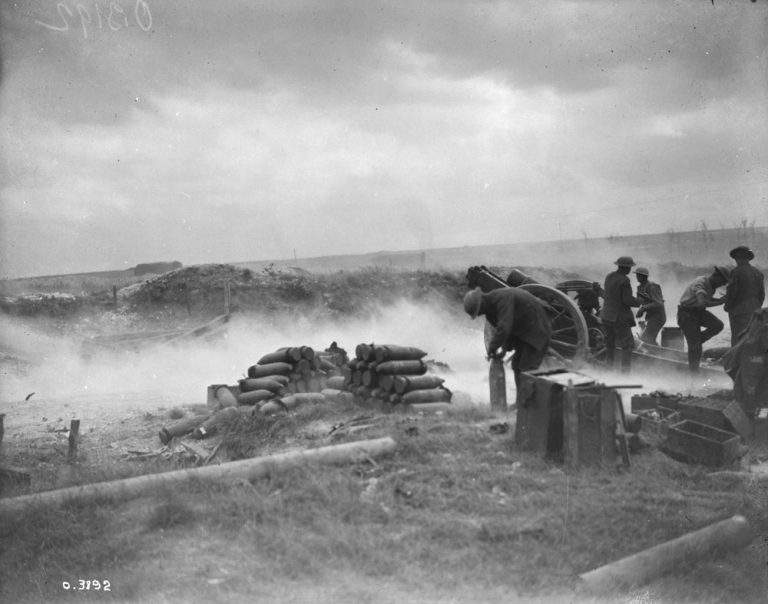close
Learn
August 1918

The Canadian Corps had just finished their victorious battle at Amiens on 14 August when they were charged with participating in the actions to break the German trench systems around Arras. With an estimated 12,000 casualties that needed replacing with fresh troops, the Corps was still feeling the effects of their initial entry into the Allies’ August push, but they had little choice. Currie had to prepare his men for another assault.

Unlike Amiens, the Corps did not have the element of surprise and with less than a week to plan it was going to be a tough fight that relied on heavy artillery, infantry mastery, and personal courage. Once again, counter battery work was extremely important to the success of the battle, and Canadian gunners worked to ensure that German artillery had been disabled as much as possible on the day of the battle.
Currie compensated for the lack of surprise by planning a night battle, which began under darkness on 26 August at 3 AM, in the pouring rain. The Corps advanced against German machine gun crews, each of which needed to be taken out to ensure forward movement. By the end of the day, the Corps had advanced 5 kilometres and retaken Monchy-le-Preux, however, it was not the end for them. The smaller attacks leading them towards the fearsome Drocourt-Quéant Line cost the Corps at least 6,000 casualties and drained precious man power; experienced soldiers that Currie could not afford to lose. German casualties are thought to be at least 3,000 prisoners, with an unknown number of dead and wounded.
Technological advancements
Arras was another opportunity for the Corps to use the techniques that they had been perfecting for the past year. Currie used the Royal Air Force and his counter battery units to devasting effect, knocking out enemy guns before the day of the battle, and the infantry divisions advance quickly and freely behind a creeping barrage. The first day of Arras also made use of a night attack, a tactic that Currie had used before when the element of surprise was missing and would use again in the coming weeks.
Like Amiens, the Canadian portion of the Second Battle of Arras was planned quickly; organisation for Vimy the year before took over a month, for a typical Hundred Days battle, Currie usually had less than a week, and as the Corps advanced further and further intro German-held territory, that time shortened.

Notables
Lt. Charles Smith Rutherford, of the 5th Canadian Mounted Rifles received a Victoria Cross on 26 August 1918, after attacking two pill-boxes and taking almost 100 prisoners. Rutherford survived the war and was later the Sergeant at Arms of the Ontario Legislature. Click the image below to access his full service file from Library and Archives Canada.
Pte Howard Douglas Graham,was only 20 when he fought with the 21st Battalion at Arras as part of their intelligence section. He survived the war and 21 years later was a Lieutenant General in the Canadian army that returned to Europe to fight the Second World War. Click the image below to access his full service file from Library and Archives Canada.